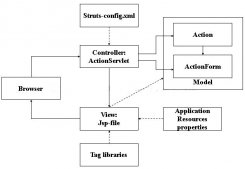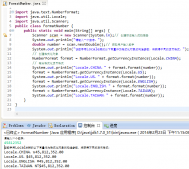可能很多童鞋都还不是很清楚在mybatis可以使用各种脚本语言来定义Mapper文件里面的动态SQL;目前mybatis支持的脚本语言有XML(默认的);Velocity和Freemarker三种。使用不同的脚本语言来完成Mapper文件的编写,第一是使用自己熟悉的脚本语言,第二是能够定义更多丰富的自定义指令来简化Mapper的开发,关于MyBatis支持脚本的原理分析,自定义脚本指令后面再写文章分析,本文先介绍mybatis中velocity脚本的使用方式。
mybatis-velocity项目可以允许你方便的使用velocity作为脚本语言来完成Mapper文件中各种动态sql的编写。
注意,在脚本中大量使用velocity开发,如果不熟悉,可以先去看看velocity脚本;
安装
在maven中添加
|
1
2
3
4
5
|
<dependency><groupId>org.mybatis.scripting</groupId><artifactId>mybatis-velocity</artifactId><version>1.2</version></dependency> |
注意我们使用的是mybatis-velocity1.2版本,该版本需要mybatis3.3支持;
在mybatis配置文件中,将velocity脚本引擎设置为默认的mapper文件引擎:
|
1
2
3
4
5
6
7
|
<typeAliases>... <typeAlias type="org.mybatis.scripting.velocity.Driver" alias="velocity"/></typeAliases><settings>...<setting name="defaultScriptingLanguage" value="velocity"/></settings> |
配置即完成。
接下来就可以在mapper文件中使用velocity脚本了:
|
1
2
3
4
|
<select id="findPerson" lang="velocity"> #set( $pattern = $_parameter.name + '%' ) SELECT * FROM person WHERE name LIKE @{pattern, jdbcType=VARCHAR}</select> |
注意:
如果使用了velocity,参数要使用@{}来引用,因为velocity的指令就是以#开头的,比如#set #if等;
使用velocity脚本,在参数中也可以配置对应的javaType和jdbcType;配置格式为:@{ property, attr1=val1, attr2=val2, ... };可配置项有javaType, jdbcType, mode, numericScale, resultMap, typeHandler, jdbcTypeName;
在velocity的指令中使用context中的变量,需要使用$_parameter来作为前缀引用,比如
|
1
2
3
4
|
#if($_parameter.name)#set($_name = '%'+$_parameter.name+'%')AND name LIKE @{_name}#end |
mybatis-velocity内建的指令
除了velocity的指令,mybatis-velocity项目为mybatis定义了一些内建的velocity指令:
trim
|
1
|
#trim( prefix prefixOverrides suffix suffixOverrides ) body #end |
其中的参数含义同XML的trim参数含义相同;
一个例子:
|
1
2
3
4
5
6
|
#trim(" WHERE " " AND| OR")#if($_parameter.name)#set($_name = '%'+$_parameter.name+'%')AND name LIKE @{_name}#end#end |
where
|
1
2
|
#where() body #end#where()同XML中的<where>相同,可以替换条件前的AND/OR,替换为WHERE;注意一定是\where()有括号的; |
mset
|
1
2
|
#mset() body #end#mset前面加一个m,为的是和velocity本身的#set指令区别,#mset等同于XML中的<set>元素,可以在条件前加上set语句,并且去掉set块最后的分号; |
一个例子:
|
1
2
3
4
5
6
7
8
9
|
<update id="update">UPDATE USER #mset()#if($_parameter.name) name=@{name}, #end#if($_parameter.age) age=@{age}, #end#if($_parameter.bornDate) borndate=@{bornDate} #end#endWHERE id = @{id}</update> |
repeat
|
1
2
|
#repeat( collection var separator open close ) body #end#repeat指令和XML中的<foreach>元素相同,能够方便的遍历集合/数组类型元素,并使用其中的每一个元素: |
一个例子:
|
1
2
3
4
5
6
|
SELECT *FROM City#where() #repeat( $_parameter.ids $id "," " state_id IN (" ")" ) @{id} #end#end |
in
|
1
|
#in( collection var field ) body #end |
#in指令是一个新的指令,能够快速的专门针对SQL中的IN条件生成对应的field IN()语句;参数列表中,collection代表要遍历的IN中的内容;var代表遍历中的每一个对象的临时引用名称;field代表在IN语句之前生成的字段名称;
一个例子:
|
1
2
3
4
5
6
|
SELECT *FROM City#where() #in( $_parameter.ids $id "state_id" ) @{id} #end#end |
自定义指令
mybatis-velocity允许你方便的自定义自己的指令用于简化开发,自定义指令的步骤为:
在classpath中添加一个 mybatis-velocity.properties配置文件;
创建自己的Velocity指令解析类;
将自己创建的Velocity指令解析类添加到配置文件中;
在mapper.xml文件中使用指令;
一个例子:
|
1
2
3
4
5
6
7
8
9
|
// User defined directivepackage com.myproject.directives;//自定义的指令类需要继承Directive类;public class MyDirective extends Directive { }//mybatis-velocity.properties//如果有多个自定义指令类,使用分号隔开;userdirective=com.myproject.directives.MyDirective;// mapper xml fileSELECT *FROM City #myDirective() ...... #end |
综合使用
如果使用velocity-mybatis,一个典型的CRUD的mapper就可以看起来是这个样子:
|
1
2
3
4
5
6
7
8
9
10
11
12
13
14
15
16
17
18
19
20
21
22
23
24
25
26
27
28
29
30
31
32
33
34
35
36
37
38
39
40
41
42
43
44
45
46
47
48
49
50
51
52
53
54
|
<mapper namespace="mybatis.com._520it.mybatis.UserMapper"><resultMap type="User" id="user_mapping"><id column="id" property="id"/><result column="name" property="name"/><result column="age" property="age"/><result column="borndate" property="bornDate"/></resultMap><insert id="add" keyColumn="id" keyProperty="id" useGeneratedKeys="true">INSERT INTO USER(name,age,borndate) VALUES (@{name,javaType=string,jdbcType=VARCHAR},@{age},@{bornDate})</insert><update id="update">UPDATE USER #mset()#if($_parameter.name) name=@{name}, #end#if($_parameter.age) age=@{age}, #end#if($_parameter.bornDate) borndate=@{bornDate} #end#endWHERE id = @{id}</update><delete id="delete" parameterType="long">DELETE FROM USER WHERE id = @{id}</delete><sql id="user_column">id,name,age,borndate</sql><select id="get" resultMap="user_mapping">SELECT <include refid="user_column"/> FROM USER WHERE id = @{id}</select><select id="list" resultMap="user_mapping">SELECT <include refid="user_column"/> FROM USER</select><select id="listByName" resultMap="user_mapping" parameterType="string">SELECT <include refid="user_column"/> FROM USER WHERE name = @{name}</select><select id="queryBy" resultMap="user_mapping">SELECT id,name,age,borndateFROM USER#where()#if($_parameter.name)#set($_name = '%'+$_parameter.name+'%')AND name LIKE @{_name}#end#end#if($_parameter.orderBy)ORDER BY @{orderBy} @{orderType}#end#if($_parameter.pageSize>-1)LIMIT @{start},@{pageSize}#end</select></mapper> |
以上所述是小编给大家介绍的Mybatis velocity脚本的使用教程详解(推荐),希望对大家有所帮助,如果大家有任何疑问请给我留言,小编会及时回复大家的。在此也非常感谢大家对服务器之家网站的支持!
原文链接:http://www.jianshu.com/p/cecc187410be














